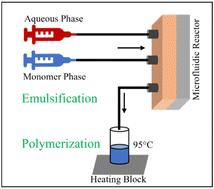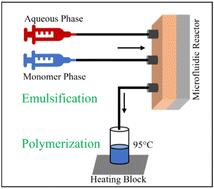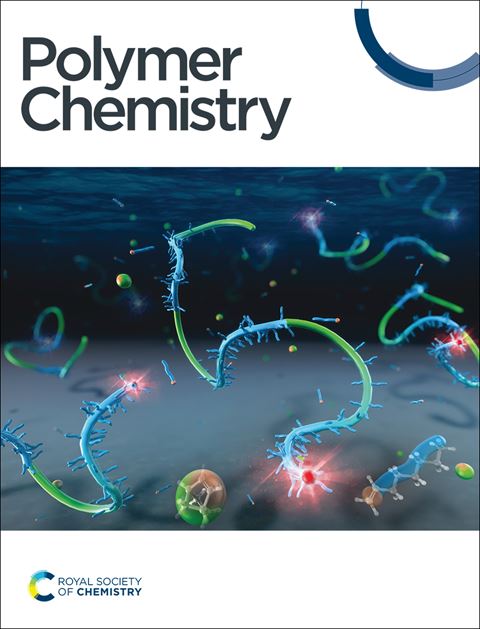微流控乳液聚合:表面覆盖剂的分子量和浓度影响各向异性聚甲基丙烯酸乙烯颗粒的形成
IF 3.9
2区 化学
Q2 POLYMER SCIENCE
引用次数: 0
摘要
表面覆盖剂——例如,两亲性表面活性剂分子、水溶性聚合物或聚电解质——在聚合反应中对胶体聚合物颗粒的形成和稳定性起着关键作用。在这里,我们研究了聚合物表面盖层剂的分子量和浓度对聚甲基丙烯酸乙烯酯(PVMA)胶体纳米粒子(NPs)通过微流控乳液聚合聚合的影响。具体而言,研究了聚乙烯吡罗烷酮(PVP,分子量为10000、40000、360000和1 300000 MW,浓度为0.05、0.5、1、2.5、5和10 mM,重复单位浓度)和聚苯乙烯磺酸钠(PSSS,分子量为70000和200000 MW,浓度为0.1、1、2.5、5、10和20 mM,重复单位浓度)的分子量和浓度对PVMA NPs形成的影响。根据表面封盖剂的分子量和浓度,我们得到了精细纹理组装的、球形的、花状的、蓬松的和细长的球形PVMA NPs,尺寸从70到500纳米不等。通过我们的微流控合成PVMA NPs,我们对表面覆盖剂的分子量和浓度如何影响聚合物NPs的形成有了基本的了解。本文章由计算机程序翻译,如有差异,请以英文原文为准。


Microfluidic-supported emulsion polymerization: molecular weight and concentration of surface-capping agents impact the formation of anisotropic polyvinylmethacrylate particles
Surface-capping agents—for example, amphiphilic surfactant molecules, water-soluble polymers, or polyelectrolytes—play a critical role during polymerization reactions for both the formation and stability of colloidal polymer particles. Here, we investigated the effect of the molecular weight and concentration of polymeric surface-capping agents on the assembling of polyvinyl methacrylate (PVMA) colloidal nanoparticles (NPs) via microfluidic-supported emulsion polymerization. Specifically, the impacts of the molecular weight and concentration of polyvinylpyrrolidone (PVP, molecular weights of 10 000, 40 000, 360 000, and 1 300 000 MW, concentrations of 0.05, 0.5, 1, 2.5, 5, and 10 mM, repeating unit concentration) and poly(sodium styrene sulfonate) (PSSS, molecular weights of 70 000 and 200 000 MW, concentrations of 0.1, 1, 2.5, 5, 10, and 20 mM, repeating unit concentration) on the formation of PVMA NPs were investigated. Depending on the molecular weight and concentration of surface-capping agents, we obtained finely textured assembled, spherical, flower-shaped, fluffy, and elongated spherical PVMA NPs with sizes ranging from 70 to 500 nm. With our microfluidic-supported synthesis of PVMA NPs, we contributed to a basic understanding of how the molecular weight and concentration of surface-capping agents impact the formation of polymer NPs.
求助全文
通过发布文献求助,成功后即可免费获取论文全文。
去求助
来源期刊

Polymer Chemistry
POLYMER SCIENCE-
CiteScore
8.60
自引率
8.70%
发文量
535
审稿时长
1.7 months
期刊介绍:
Polymer Chemistry welcomes submissions in all areas of polymer science that have a strong focus on macromolecular chemistry. Manuscripts may cover a broad range of fields, yet no direct application focus is required.
 求助内容:
求助内容: 应助结果提醒方式:
应助结果提醒方式:


